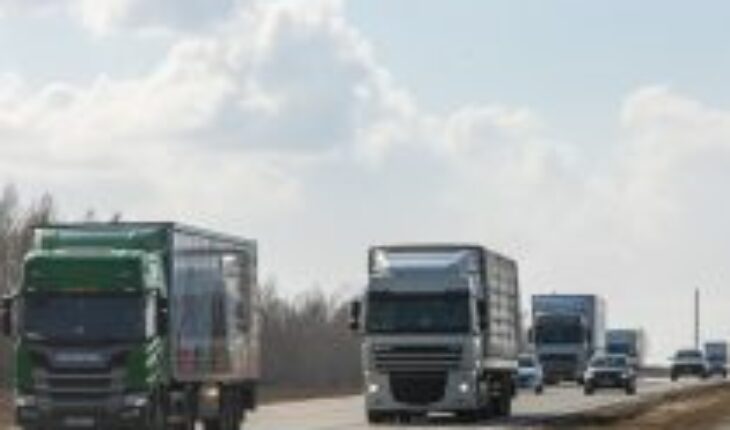The land freight industry plays a fundamental role in world economies. It is the backbone of the movement of goods across the planet. But just as it is an essential activity and generator of jobs, it is, at the same time, one of its biggest polluters, so the progress towards the introduction of zero-emission trucks, either with lithium batteries or hydrogen cells, must be the country’s goal.
In Chile today, as in the rest of Latin America, transport is the sector with the highest growth in its emissions, due to a sustained increase in sales of internal combustion vehicles: the fleet of heavy vehicles in 2020 was 256,508 units, where 98.5% corresponds to diesel vehicles and 80% of the total are trucks and tractors. The projection is that it would exceed 349 thousand units in 2032.
Currently, in addition, 36.6% of the country’s final energy consumption corresponds to the transport sector, according to the National Energy Balance 2020 prepared by the Ministry of the Environment, making it responsible for about 25.5% of the country’s total Greenhouse Gas (GHG) emissions.
In the local freight transport sector, the implementation of the emission standard for heavy vehicles is already in the final phase, to homologate it with the international statute Euro VI or EPA10. This provision, which is expected to be in force this year, will seek that new diesel trucks and buses entering the country from 2025 emit 98% less fine particles (PM 2.5) and 94% less nitrogen oxides (NOx).
This is complemented, in addition, with new technologies for particulate filter, to further reduce emissions, which is combined with the fact that we have the fuel quality necessary for its use, since the diesel that is marketed today in Chile has 15 parts per million (ppm) of sulfur and in March 2025 it will be only 10 ppm, becoming one of the fuels with the cleanest parameters worldwide.
But we can and must aspire to more: a truck fleet that is zero emissions, that runs on electricity or hydrogen.
According to the national electromobility strategy – published just a year ago – the country should move towards that, because from 2035 all new mining, forestry, construction and agricultural machinery purchased in the country must be zero emissions. Something that by 2045 should occur in the total sales of land cargo transport vehicles.
European, Chinese and American brands are already arriving in Chile with models and prototypes of electric trucks powered by lithium batteries. In addition, there are already pilot tests of heavy electric vehicles that use hydrogen as fuel.
The opportunities opened by electromobility for trucks in Chile are many: jobs, training, low emissions into the atmosphere, fewer respiratory diseases, less noise, vehicles that are up to 7 times more efficient, with a 75% reduction in maintenance and operational costs, because they do not require lubricants.
But several challenges remain.
From the point of view of the development of charging infrastructure, gas stations should have a greater network of specialized charging according to type of vehicle, and well distributed throughout the territory, not only the center of the country as it happens today.
The type of batteries used also affects the autonomy and charging time of a truck. Today it is handled for 45 tons a range of 200 to 220 kilometers and then must be charged for six to eight hours. This reduces competitiveness. The ideal is that the batteries have a range of 500 kms and a charge of only two hours.
The ANAC report on sales of zero and low emission vehicles for December 2022 already shows a hopeful trend, with 69 electric trucks sold, versus 21 in 2021 and only 1 in 2020. There JMC stands out, with 28% of the units; Hyundai, with 18%; and JAC, with 12%. However, in the country as a whole, electric and zero-emission vehicles as a whole are only 1.6% of sales.
This, precisely, could be the main obstacle to a rapid adoption, since although these technologies present great opportunities for transition towards carbon-neutrality, their novelty still makes them expensive for large companies and for small carriers simply unattainable, since currently a 45-ton truck, with batteries for about 600 kilometers of autonomy, is valued at US $ 300 thousand.
The big challenge, then, is that theWe should develop a policy of incentives, tax benefits or subsidies, which allow both the acquisition and transformation of combustion vehicles to electric for those who opt for the environmental and social benefit produced to a country by having zero emission vehicles, without leaving this economic weight exclusively in the pockets of the private.
The signs must be given now!
Follow us on
The content expressed in this opinion column is the sole responsibility of its author, and does not necessarily reflect the editorial line or position of El Mostrador.





